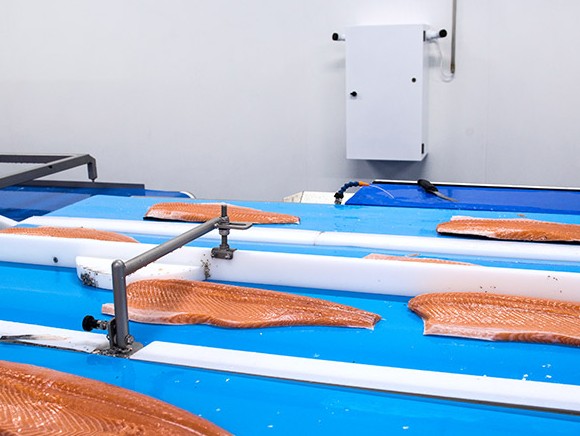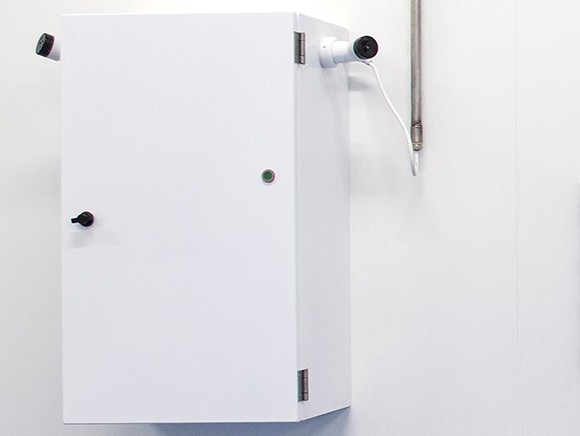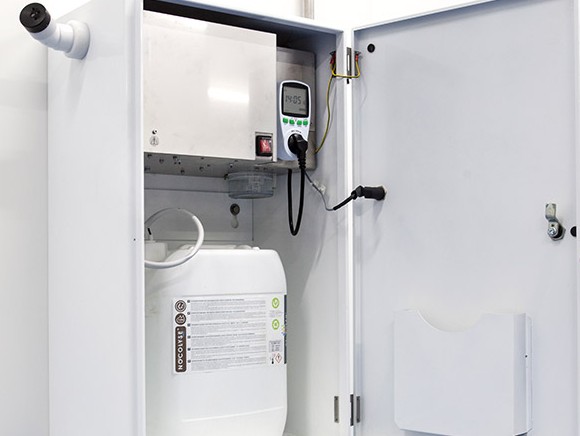
A disinfecting dry steam that can disinfect a production space of around 500 cubic metres in one hour. The space is ready for use immediately afterwards. Does that sound too good to be true? Since receiving authorisation from the CTGB in 2016, the importer and supplier Simpel Desinfecteren (Simple Disinfection) has grown staggeringly.
Releasing a dry disinfecting steam in a production space replaces the disinfection step during the cleaning process. Most importantly: no rinsing necessary. Cleaning staff need less time and the microbiological results are better. According to the importer of the Nocotech concept, the infection density stays low permanently. Isn’t that too good to be true? “I get that question often,” says Hugo ter Hoeve, director and owner of the importer and supplier Simpel Desinfecteren. “However, there are just many advantages. And the technique is non-corrosive: the steam does not affect the materials. It is with good reason that we received an N-number from the Board for the Authorisation of Plant Protection Products and Biocides (CTGB). That made us an officially authorised disinfection agent for the food industry.
The key to the concept is the device that blows out a composite fluid containing 7.9% hydrogen peroxide, after which it is converted into a dry disinfecting steam. As soon as the OH ions in the steam come into contact with bacteria, they kill them. The OH ions then dissolve. The steam only has to be used in an enclosed space for thirty minutes to get the job done. For a space of 500 cubic metres, it takes about an hour before the room is ready for use again.
Co-director and owner Robert Kostrubiec adds: “We primarily focus on meat and fish processing businesses, because they work with the most susceptible products. The products are often processed while raw. That is why the requirements are high, which means that we have the most to offer this market.”
Early adopter Davie Bakker is a quality assurance manager at Het Urker Zalmhuys, a young and innovative company specialising in the processing of fresh and smoked salmon from Norway. The company has worked with Simpel Desinfecteren since 2016.
______________
 On May 31 the OSV will visit Het Urker Zalmhuys. Check the OSV Memberpage of this edition or the site:
On May 31 the OSV will visit Het Urker Zalmhuys. Check the OSV Memberpage of this edition or the site:
______________

Bakker was one of the first to begin collaborating with Ter Hoeve and Kostrubiec after the company was started in 2016. Bakker: “As a quality assurance manager, I always look into new developments that can improve our quality, including in the field of business hygiene. Robert [Kostrubiec] came to see me and explained the concept. I immediately saw the possibilities, but I involved our cleaning staff in the discussion first. They were also positive about it, so after that I called a few of their clients as a reference. We conducted a test and were allowed to try out the product for a month. After that, I was convinced.”
Bakker did ask the supplier to make a new machine for him very quickly. The two original devices are portable: the Nocospray and the larger Nocomax. Both are used the same way, but are intended for different sized rooms. Bakker needed a device that he could mount on the wall. That became the Nocofix. “The portable system worked well, but we constantly had to move it into the various production spaces. Now, there are five fixed units in the different production rooms. These are set to fixed times. The device itself indicates when the fluid needs to be refilled. For those of you who are not convinced: a similar method is used across the world at hospitals, often after infectious outbreaks.

The results don’t lie. Bakker: “In the previous production space, we immediately saw results. There was no more mould formation in the damp areas and even the caulked joints stayed clean. The microbiological condition visibly improved. Even in our new production space, the infection density stays consistently low, despite the fact that we only use the disinfection method over the weekend. During the week, we clean and disinfect the traditional way. For us, Nocotech provides security in maintaining quality, a low infection density, and low microbiological values.”
The system also fits well into a policy for impacting the environment as little as possible. Ter Hoeve: “There is no residue, so no hazardous remnants are left behind, and no water is required.” He concludes: “In the beginning, we had to convince businesses, but recently we are being called more often. It’s a word-of-mouth effect.”
www.simpeldesinfecteren.nl
www.heturkerzalmhuys.nl
The device itself indicates when the fluid has to be refilled.
Source: © Ton Kastermans Fotografie